Wiseworming
 For information on worming…
For information on worming…
We have produced a detailed brochure which provides information on why undertaking worm egg counts helps you to provide the best possible care for your horse.
Interpreting your results…
If you have recently received worm egg count results from us, please click here for details on how to interpret those results.
Buying worm egg count kits…
If you would like to buy a worm egg count kit, you can do so in our shopping section or they can be purchased in store at Country Corner in Kelso, J S Main in Haddington and Hendry Equestrian Shop, Little Spott, Dunbar.
We attempt to contact you with the results within 72 hrs of receiving the samples. These are best delivered by e-mail. However if you would like to receive them by either text or post please indicate this on the submission form.
The results will indicated to the nearest 50 epgs along with a suggested treatment protocol for you to discuss with your own veterinary surgeon. Because it is impossible to create a one size fits all worming program for every horse under every circumstance you should always consult your veterinary surgeon prior to choosing a treatment regime.
Additional information for worming young stock…
For further information on looking after your youngsters’ worming needs, please click here.
Introductory brochure for Equitait Veterinary Practice worm egg counts
As the guardian of your horse, thank you for your interest in worming control. As a veterinary practice our clients want us to help them provide the best possible care for their horse. They like the concept of slowing resistance to worms, treating only the horses that require to be treated and having the opportunity to save money on their overall worm control. For decades the main goal of worm control strategies was to reduce parasite numbers to optimise horses’ health. However, with increasing resistance to wormers and better understanding we realise that it is also important to preserve the effectiveness of our current wormers. Some of the current issues are described below:
80% of the worm population comes from 20% of the horse population It is well understood that some horses harbour high worm burdens while others consistently maintain a low burden. In many cases we are routinely worming horses that already have a low parasite burden.
Resistance is increasing Regular and intensive worming treatments have led to increasing levels of drug resistance to most of the currently available wormers. We know that the rate of resistance is directly correlated to the frequency of drug use. So, every time you worm your horse you are potentially increasing the number of resistant worm larvae on the pasture.
There are currently no new wormer classes being developed for use in horses There is resistance to all classes of currently used wormers within the roundworm population.
The development of resistance in some of the most important equine parasites to many of the available wormers has led to a reconsideration of worm control management. Routine treatment of all animals at a fixed interval all year round is no longer considered a sustainable or reliable approach. Instead we need to balance treatment, in order to control worm-associated disease, with the requirement to preserve drug effectiveness.
While very simple recommendations are expected by clients, worm control remains a complex and constant challenge. A ‘one size fits all’ approach is impossible because horses are infected by a number of different worm species with different life cycles, distribution, disease characteristics, and wormer susceptibility. Factors such as age, general health, use, pasture management practices and clinical history are also all important. Differences in opinion also exist between different veterinarians and scientists. It is therefore challenging to design a simple worming programme that everyone can follow. We aim to give you what we feel is the best up to date information available so that you in conjunction with your own veterinary surgeon can choose a strategy which is best suited to your situation.
While it is difficult to represent all the information we would like to in a simple brochures, we make no apologies for trying to touch on some of the more complex issues with worm control. If you would like to see more in depth information on treatment strategies involved and where that information comes from please do not hesitate to view our website www.equitait.com and click on the worming tab.
Worms and Worm Control Strategies
| Group | Worms | Information |
| Round worms (nematodes) | Cyathastomins, small strongyles, Redworms | Very common. Larvae can encyst in intestinal wall. Larval cyathostominosis can cause diarrhoea and weight loss. |
| Large strongyles (Strongylus species) | Now relatively rare. Larvae migrate through blood vessels. Can cause colic. | |
| Ascarids Parascaris equorum | Common and significant in foals and yearlings. Larvae migrate through lungs to the intestines where can cause impactions and colic. Resistance becoming an increasing problem. | |
| Pinworm, Threadworm,Oxyuris | Adult worms live in the colon. Eggs laid on anus cause irritation and scratching | |
| Tapeworm
(Cestodes) |
Anoplocephala perfoliata | Common in grazing horses. Have been associated with several types of colic. |
| Lungworm | Dictyocaulus arnfieldi | Rare, associated with being co-grazed with donkeys. |
| Liver fluke (Trematodes) | Fasciola species | Although seen in farm animals rarely appears to be a threat to horses |
| Bot fly larvae | Gasterophilus species | Technically not worms, rarely cause clinical problems. more common in the South of Britain. |
Due to their sheer number and prevelance, their capability to cause significant disease and their ability to develop resistance to the commonly used wormers, the cyathastomins are currently recognised as the most important horse nematodes.
Most horses will harbour very low levels of cyathastomins without exhibiting clinical signs. The worm larvae tend to go through a dormant inhibited development phase when they become encysted within the horse’s intestinal wall. This is more common over the winter months. In a small number of horses these encysted worms can accumulate in vast numbers (several millions). If these encysted larvae all emerge from the gut wall at the same time it can cause significant inflammation of the large intestine and results in the syndrome known as larval cyathastominosis which can be associated with sudden onset weight loss, colic, diarrhoea, fluid retention and, in some cases, death.
When designing a worm control strategy that also aims to slow the development of wormer resistance there are some other important things to consider:
Plan a strategic worming programme that will reduce unnecessary treatments. This will often incorporate worm egg counts.
Pasture management – is an extremely important, and often overlooked, aspect of worm control. Picking up droppings markedly reduces the pasture population of worms and reduces the number of wormer treatments that are necessary. This should ideally be done twice weekly.
Rotating fields is a useful way of allowing eggs to die off before horses graze the area again. However to be most effective this requires gaps of over a year without horses grazing.
Harrowing is controversial because although it is useful for breaking up the faeces exposing them to the environment and hoping that the eggs will die off more quickly, it also spreads the eggs over a larger area into areas where the horse is more likely to be grazing.
Co-grazing the paddocks with other species such as sheep will also help to reduce worm egg numbers. Horse worms will not develop in sheep and so they act as a good ‘biological vacuum’. Deep ploughed and re-seeded pasture is thought to be free of redworm larvae.
Quarantining new horses – the movement of horses onto new yards is the most important cause of resistant worm spread so it is prudent to allow time for new arrivals to undergo a period of worming or testing.
Correct dosage rates are extremely important to ensure each animal receives the correct dose of wormer to slow wormer resistance. Visual estimation of weight often results in under dosing and this is then a major contributing factor to developing wormer resistance. It is therefore recommended that weight tapes are used to improve accuracy.
Parasite refugia – this is defined as the parasite population that is not exposed to the drug at the time of treatment (eg worms on the pasture and encysted worms when treated with non-larvicidal wormers). Although a relatively new concept it is now recognised as the most important way of slowing resistance. Worm control strategies that retain a refugia of worms which are sensitive to wormers in any given population should be encouraged. Because the refugia are worms that should be carrying a higher proportion of genes that are susceptible to the wormer they provide a worm population who will mate with worms carrying resistant genes. Thus an adequate refugia population of sensitive worms dilutes the transmission of resistance genes to the next generation of worms.
Dose and move strategy – although frequently recommended in the past to reduce contamination of the new pasture, now such techniques are considered controversial because we believe it increases selection for resistant worms. This is due to the reduced proportion of the parasite refugia population on the new pasture.
Drug rotation – while it is much practiced and often recommended there is little evidence to suggest this helps slow overall wormer resistance and in fact may do the opposite. It is probably more important to establish which wormer classes are effective on individual yards by performing faecal egg count reduction tests where applicable. With such widespread resistance to the Benzimadazole class (eg Panacur) this realistically only leaves us two classes to be able to rotate through duing the grazing season ie Pyrantel and Ivermectin. In our opinion products containing moxidectin e.g. Equest and Pramox should preserved for treatments during the winter months against encysted cyathastomins, clinical cases and where there is proven resistance to other classes of wormers.
Worm Egg Count (WEC)
Worm egg counting involves a process whereby a known amount of fresh dung is put through a precise process, allowing eggs produced by roundworms to be indentified and counted under a microscope. A calculation then converts this count to the number of eggs per gram (epg) of faeces. This number of eggs per gram is a standard measure and allows us to estimate the egg producing adult worm burden in the horse’s intestines. WECs are best utilised during the grazing season (March to September) to give a more reliable indicator as to existing adult worm burdens. There is little value in performing these in the Winter months when the majority of larvae in the horse are encysted in the gut wall.
Worm egg counts can be used:
- to estimate the level of burden of infestation in normal horses;
- as part of a strategic worming program to try and minimise wormer resistance and cut down on the cost of worming;
- to build up a picture of each horse’s individual susceptibility to roundworms;
- to identify whether a worm infestation is a likely cause in the clinical assessment and investigation of a horse with weight loss, diarrhoea or colic;
- to assess whether the worms in your horse are resistant to the wormers you are using, by performing a faecal egg count reduction test;
- to guage the effectiveness of your current worming program;
- as an estimate of pasture contamination; and
- to assess the worm burden of a new horse introduced onto a new premises (or prior to purchase).
As well as the correct season, timing of WECs is also important. When utilising them in a strategic worming program they should be done no sooner than the normal egg reappearance period (ERP) following the previous wormer treatment (see below).
| Class | Product names | Egg reappearance period (ERP) | |
| Benzimadazole | Panacur, Zerofen 22% | 4-6 weeks | |
| Tetrahydropyrimidines eg Pyrantel | Exodus, Strongid P, Pyratape P, Provid | 4-6 weeks | |
| Macrocyclic lactone | Ivermectin | Eqvalan, Equimax, Noromectin, Maximec, Eraquell, Annimec, Vectin | 8-10 weeks |
| Macrocyclic lactone | Moxidectin | Equest, Pramox | 13 weeks |
Faecal egg count reduction (FECR) tests assess the prevalence of resistance to a particular wormer. To undertake these, a number of horses with high WECs should be tested just prior to and then 14 days following worming and the two results compared. Large farms or yards are advised to do an annual FECR test to determine which wormers are effective on their yard.
A WEC is used to identify infestation of common adult worm species including small (cyathastomins) and large adult redworms (strongyles) and large roundworms (ascarids) in your horse.
While WECs are revolutionising the way we create worming control programs we must be mindful of their limitations. They do not give an accurate assessment of encysted larvae, bots, pinworms or tapeworm. Care should be taken to consider treatments or testing for tapeworm. For a more accurate way of detecting the tapeworm burden an ELISA blood sample is generally recommended. Without doing this test it is still considered important to routinely treat for tapeworms either annually (in the autumn) or bi-annually (spring and autumn).
A one-off negative WEC does not guarantee the absence of a worm burden throughout the rest of the year and sometimes the correlation between the egg counts and the number of adult worms is poor with some adult worms producing different numbers of eggs per day . This is why we recommend a series of WECs throughout the grazing season to ensure we are not placing animals under increased risk.
While selective treatment is currently not generally recommended for yearling or foals FECR tests are useful in this age group to help identify which wormers are likely to be effective, particularly against Parascaris equorum.Our method of sampling is sensitive to an accuracy of 50 epg. Current thinking suggests that counts of 200 epg or less are considered low and often it is recommended that these animals are left untreated. It is thought that a low level of infestation enhances the horse’s natural immunity to the parasites and provides a sensitive refugia population. Horses with counts greater than 200 are usually treated with an appropriate wormer.
| Month | When to worm egg count | Suggested treatment protocol* |
| January | ||
| February | ||
| March | ||
| April | WEC in 1st week in April | If ≤200 epg – no treatment
If >200 epg – treat |
| May | ||
| June | WEC in mid June | If ≤200 epg – no treatment
If >200 epg – treat |
| July | ||
| August | WEC in last week in August | If ≤200 epg – no treatment
If >200 epg – treat |
| September | ||
| October | ||
| November | Treat with PRAMOX (this will treat both tapeworms and encysted cyathastomins | |
| December |
*Prior to any treatment or absence of treatment please consult you veterinary surgeon and follow the data sheet recommendations enclosed with the wormer. Treatments used will depend upon previous treatments and any known resistance issues. In the main these treatments during the grazing season will consist of either ivermectin and pyrantel based products.



